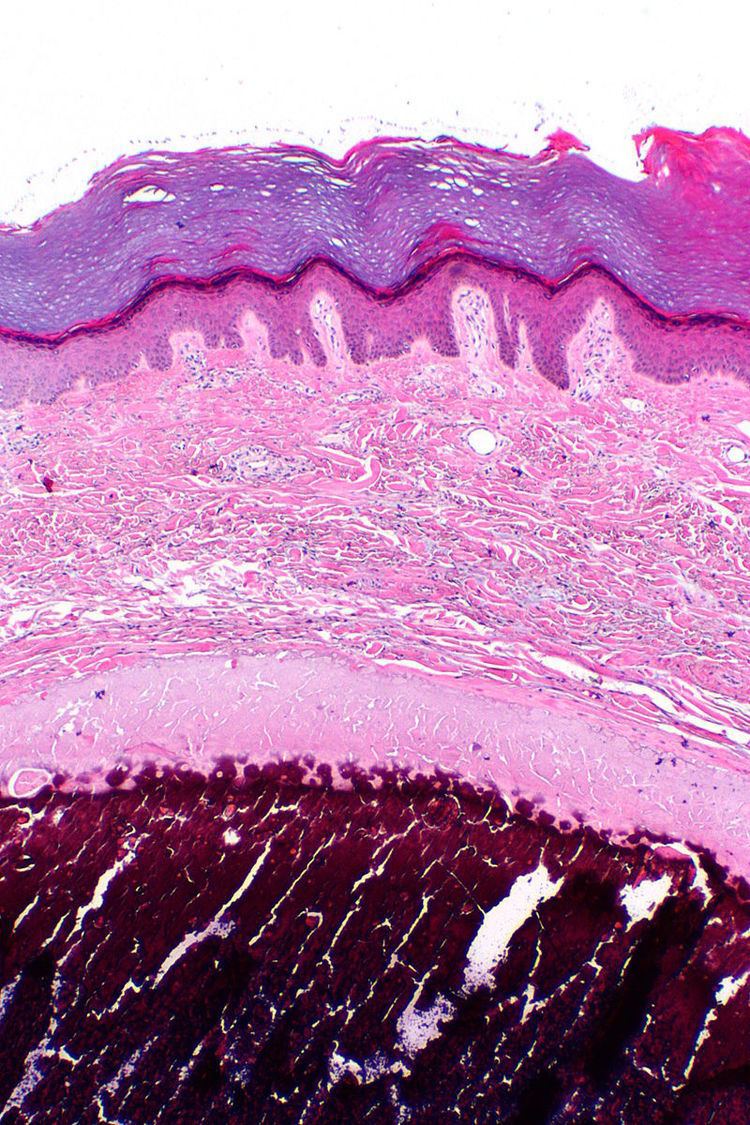Specialty dermatology ICD-9-CM 709.3 eMedicine derm/66 | ICD-10 L94.2 DiseasesDB 1896 | |
 | ||
Calcinosis cutis (or cutaneous calcification) is a type of calcinosis wherein calcium deposits form in the skin. A variety of factors can result in this condition. The most common source is dystrophic calcification, which occurs in soft tissue as a response to injury. In addition, calcinosis is seen in Limited Cutaneous Systemic Sclerosis, also known as CREST syndrome (the "C" in CREST). In dogs, calcinosis cutis is found in young, large breed dogs and is thought to occur after a traumatic injury.
Contents
Types
Calcinosis cutis may be divided into the following types:
Causes
Calcinosis may be the results of a variety of causes such as:
References
Calcinosis cutis Wikipedia(Text) CC BY-SA
